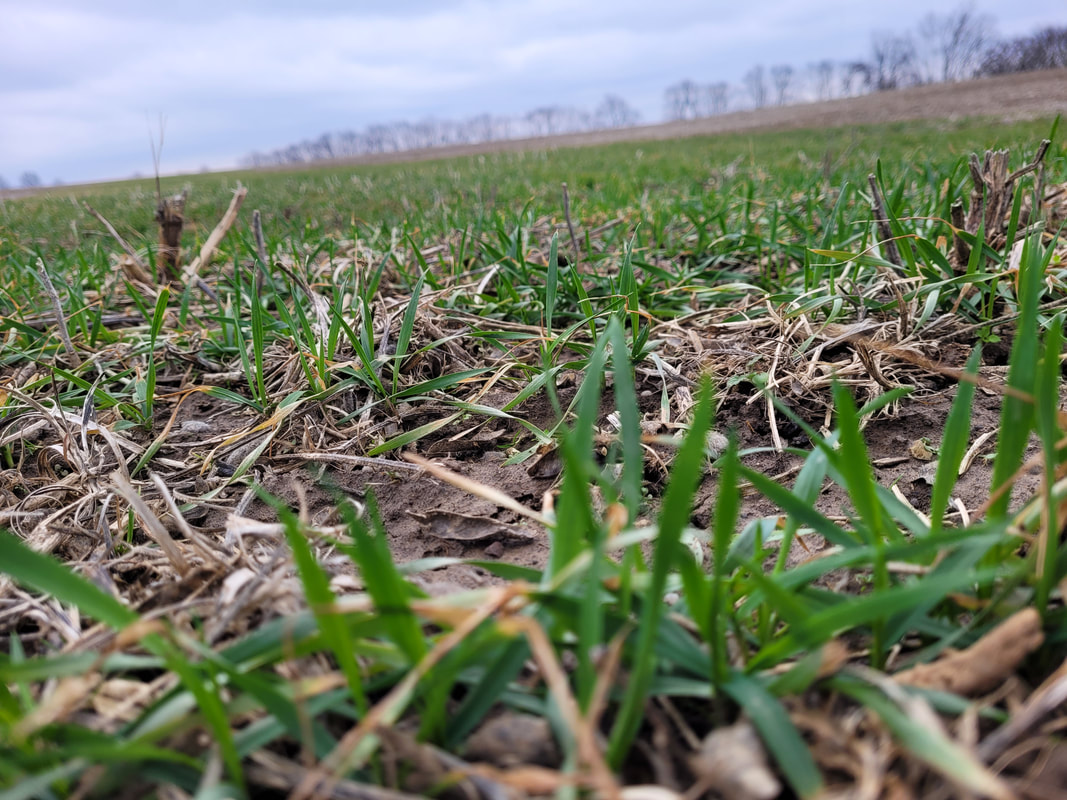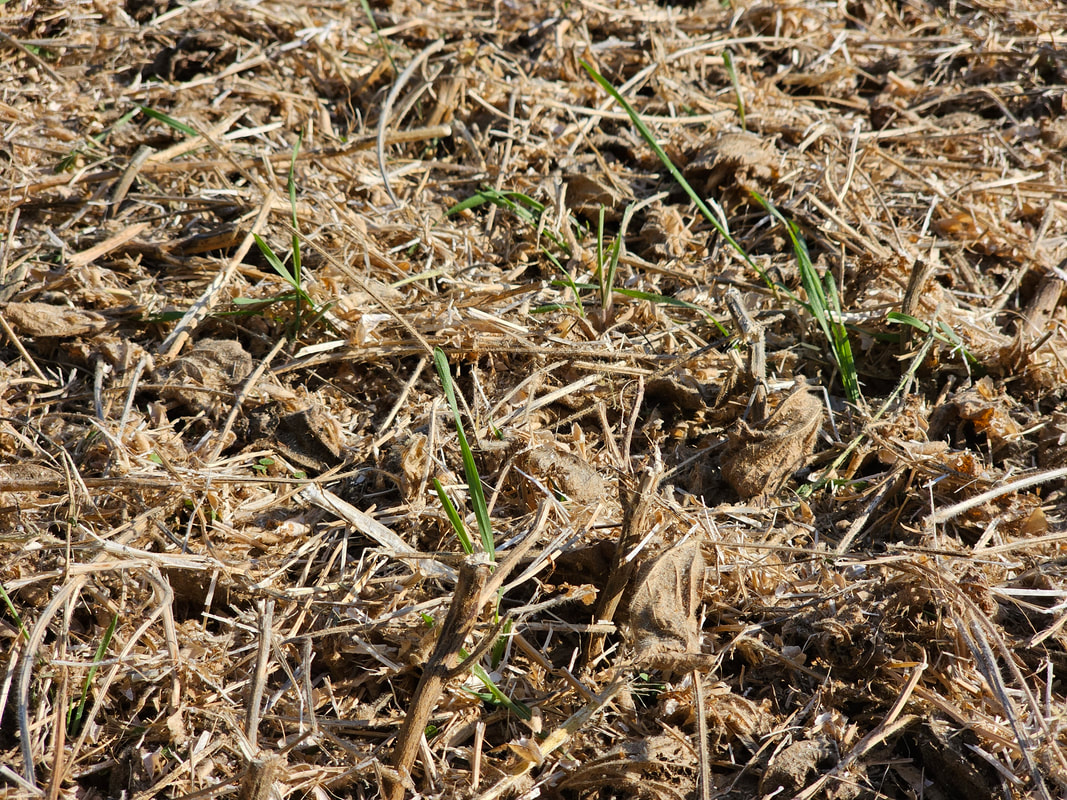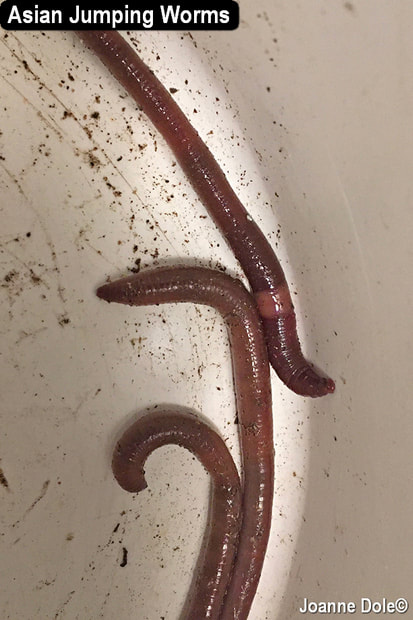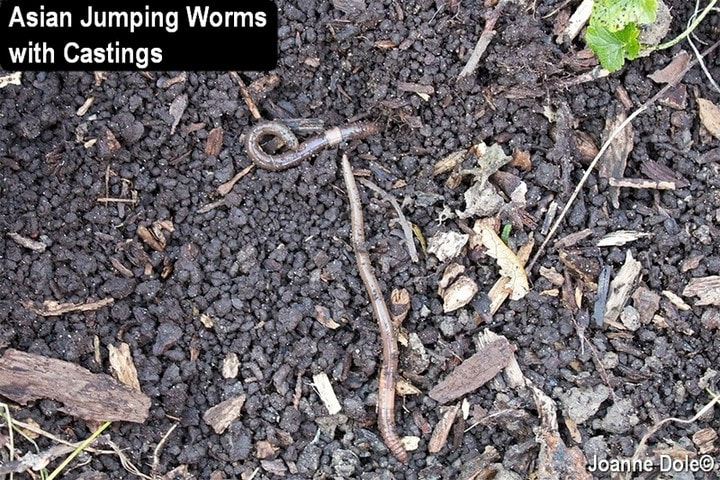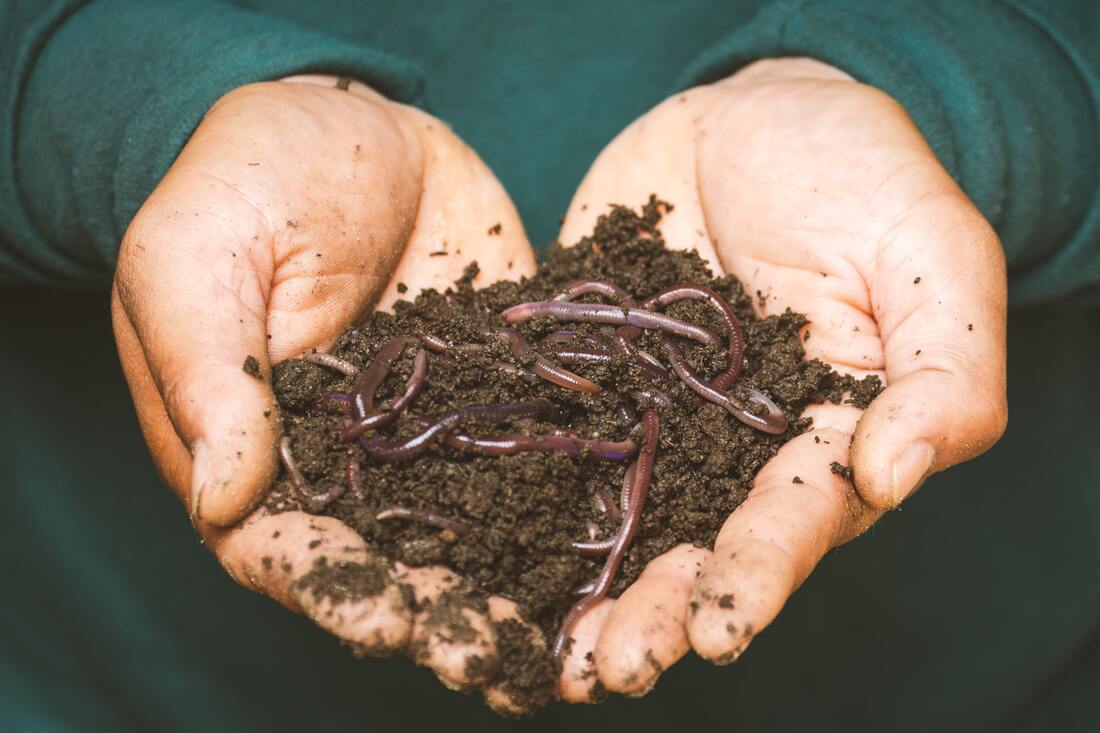|
The inclusion of cover crops in a cash crop rotation can have huge benefits to soil fertility and productivity, while at the same time protecting waterways from excess nutrient runoff.
Nitrogen Production Cover crops, specifically legumes, can create plant available nitrogen (NH3) from nitrogen gas (N2) which is readily found in the Earth’s atmosphere. Legumes create nitrogen through a symbiotic relationship with the bacteria, Rhizobium. Rhizobia infects the legumes root hairs; the bacteria receive its required sugars and vital nutrients while the host legume receives the excess plant available nitrogen. It is estimated that one-half of the NH3 created becomes available to the subsequently planted crop, approximately 1-2 months after the legume has been terminated. Nutrient Scavenging A common concern in modern agriculture both by farmers and water quality experts is the amount of applied nutrients that are left on the field after cash crops have been harvested. In a typical cash crop rotation, crop ground can lay fallow for several months giving nutrients the correct conditions to rapidly exit the field. In the scenario where a cover crop is established rapidly after or even before harvest, these leftover nutrients in the soil are taken up by the cover crop. Nutrients are safely stored until the cover crop is terminated and the nutrients can again be made available for a cash crop or remain as organic matter. This both reduces the amount of excess nutrients entering waterways, but also keeps farmer’s dollars (spent on fertilizer) in the field where it is an asset for future cash crops. Soil Builder – Compaction Breaker Cover crops also stand to improve soil quality and composition. Most notably the life cycle of a cover crop dictates that it is not harvested at termination. In this scenario the organic matter from the terminated crop all remains in the field and over time will increase the amount of organic matter of the top soil. Organic matter is an important aspect of soil health; it directly correlates to fertility in that a nominal amount of organic matter will: provide food for the soil’s microbial ecosystem, improve water infiltration and holding capacity, and enhance its ability to hold onto and supply nutrients to growing crops. Specific cover crops can also be a vital tool against compaction. The ever-increasing size of agricultural machinery is cause for concern regarding the compaction of productive soils. Cover crops which have deep roots can penetrate deep into the ground, improving soil permeability, which in turn increases water infiltration and aeration. Additionally, specific cover crops which have large taproots can break through hard pans and compacted layers of soil. This creates macropores for future cash crop root growth. Erosion Prevention Perhaps the most well-known benefit of cover cropping is the claim that planting a cover crop reduces erosion. The crop is physically “covering” the soil and shields it from both wind and water erosion. A 6mm raindrop is traveling up to 20 mph when it impacts the surface. The drops impact on the soil displaces soil particles and starts the process of erosion. Shielding bare soil with a cover crop keeps soil in place and retains the structure of the topsoil. Live roots along waterways and areas that carry water during heavy rains also help keep soil aggregates stationary during wet season rains. Additional Benefits Cover crops can provide weed suppression benefits. This is typically done by out competing or overshading growing weeds. Additionally, some species of cover crops have the ability to release substances and chemically inhibit the growth of surrounding plants (i.e. cereal rye, sunflowers and buckwheat). Cover crops if managed properly and planned accordingly can also provide grazing and forage opportunities to growers who also manage herds of livestock. Program Opportunity: To learn more about the benefits and types of cover crops for southwest Ohio, please join the Warren County Soil and Water Conservation District for the annual Agriculture Conservation Breakfast on February 24th from 8:30AM-11AM at the Countryside YMCA Events Center, 1699 Deerfield Road, Lebanon. This program is free, but registration is required. To register, please go to warren.swcd.com or call, 513-695-1337. Additional Resources: Rain or Shine (https://open.library.okstate.edu/rainorshine/chapter/5-3-raindrop-impact/) Cover Crop Farmers of Southwest Ohio (https://clermontswcd.org/wp-content/uploads/sites/23/2017/12/covercropfarmers.pdf) Cover Crops for Southwest Ohio (https://fairfieldswcd.org/wp-content/uploads/2017/02/SWOhioCover-CropBooklet.pdf) Ohio Cover Crops (https://cfaes.osu.edu/features/ohio-cover-crops)
1 Comment
As the common name suggests, Asian jumping worms (Amynthas spp.) seem to jump or thrash when handled. Little kids and worm lovers might be excited by a find like this in their lawn, garden or woodlot but finding this worm is not beneficial for the native environment. Why Jumping Worms Are A Problem Most worms that you find in the Midwest are European and Asian non-natives. Both of these non-native types alter the native environment, although Asian jumping worms do it at a more alarming rate. Jumping worms grow twice as fast, reproduce more quickly, and can work through organic debris much quicker than other worms. These invasive worms can severely damage the roots of plants in nurseries, gardens, forests, and turf. In areas of heavy infestation, native plants, microorganisms and animals such as salamanders may decline. Asian jumping worms are an annual species; the adults die after the first freeze. But the cocoons, which are about the size of a mustard seed and resemble small pieces of dirt, will survive the winter and hatch when temperatures reach 50°F for a consistent period. These self-fertilizing worms do not need mates and can produce cocoons on their own. Because populations can grow faster than the common European species, they may out-compete existing worm populations. Cocoons can be spread easily in potted plants, on landscaping equipment, mulch, tire treads, and even hiking boots. One telltale sign of an infestation is a very uniform, granular soil created from worm castings that are commonly said to look like coffee grounds. When you scratch the top layer of soil you will see the worms thrashing about with an erratic, snakelike movement. These worms, which can reach 6 inches in length, are much more active than European nightcrawlers. The Asian jumping worm can be found on the soil surface and in the leaf litter, making them easy to find. They can live anywhere from urban parks and suburban backyards to rural forests. You are also very likely to find them in compost piles and along roads. Earthworm species have a body part called the clitellum where egg cocoons are produced. The Asian jumping worm has a prominent clitellum that completely encircles the body, is milky white to light gray, and is flush with the body; the body looks metallic. On European nightcrawlers, the clitellum is raised or saddle-shaped and reddish-brown in color and does not wrap entirely around the body.
Management There is no magic control for these worms once they are found in soil. Asian jumping worms can now be found in the East, Mid-Atlantic, Midwest, and some Northwestern states. Prevention is the best way to keep them from being introduced to new areas. According to Wisconsin Department of Natural Resources, the following steps will reduce the spread of jumping worms:
Until effective research-based control strategies are developed to keep populations of this worm in check, gardeners should closely examine soil, compost, wood chips, and other soil amendments they move on or off their property. Learn how to identify these worms and educate your gardening friends and neighbors so they too can identify these worms. If you do find these worms on your property, never share plants or soil with other gardeners. For more questions regarding Warren County Soil and Water Conservation District programs and/or technical assistance on water or soil questions, visit http://warrenswcd.com or call, 513-695-1337. It is hard to believe but our food waste and other organic materials such as paper and yard trimmings equate to nearly 55% of our total waste with food making up 20-30% of this total. When these items are in our landfills they breakdown and create a material called leachate, which is toxic and can pollute groundwater, surface water and soil. Vermicomposting, a process that relies on earthworms and microorganisms to break down organic matter and transform it into a product that can be used as a valuable soil amendment and source of plant nutrients, can help homeowners with their gardening efforts but also keeps organic materials from causing problems in the landfill! Vermicomposting is a way to get earthworms to work for you in a more organized way. You can become a worm farmer easily. North Carolina State University Extension is a leader in vermicomposting. Rhonda Sherman with North Carolina Extension, states that you need 4 items to begin worm farming.
Sometimes worm bins may have issues that arise over time. It is important to note that your bin should not:
I recently came across an interesting video series produced by The USDA NRCS. There is an introduction and 7 following chapters that explore how an increasing number of farmers throughout the country are creating a new hope in healthy soil by regenerating our nation’s living and life-giving soil. You can watch all the videos here...
Molly Conley, Natural Resource Engineer |
Details
Warren County SWCD Staff BlogA blog to keep you informed on all the latest news at Warren County SWCD and in the conservation world. Archives
May 2024
Categories
All
|
|
|
Contact:PHONE: (513) 695 - 1337
EMAIL: [email protected] HOURS: Monday - Friday 7:30am - 4:00pm (except holidays) Connect:Warren County Soil & Water Conservation District Copyright © 2016
Warren SWCD Privacy Notice. Emails are serviced by Constant Contact. Constant Contact's Privacy Notice. |
